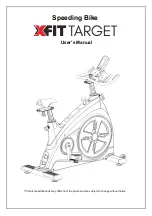
3
Cautions
Cautions are identified by the CAUTION symbol shown above.
Caution statements identify conditions or practices that could result in damage to
the equipment or other property.
CAUTION: The AED may not operate properly if it is operated or stored at
conditions outside the ranges stated in this manual.
CAUTION: The
AED was designed to be sturdy and reliable for many different use
conditions. However, handling the AED too roughly can damage it or its
accessories and will invalidate the warranty. Check the
AED and accessories
regularly for damage, according to directions.
CAUTION: Before delivering a shock, it is important to disconnect the patient from
non-defibrillation protected electronic devices, such as blood-flow meters, that may
not incorporate defibrillation protection. In addition, make sure the pads are not in
contact with metal objects such as a bed frame or stretcher.
CAUTION: The pads pouch shall not be opened until immediately prior to use.
CAUTION: Do not use or place the AED in service until you have read the AED
Operator’s manual.
CAUTION: Do not use or stack the AED with other equipment. If the AED is used or
stacked with other equipment, verify proper operation prior to use.
CAUTION: Handling or transporting the patient during ECG analysis can cause
incorrect or delayed diagnosis.
CAUTION: Periodic checks of this AED must be undertaken to ensure among other
things that the AED is not damaged in any way.
CAUTION: The pads are a single use item and must be replaced after each use or if
pouch that seals pads has been broken/compromised in any way. If damage is
suspected the pads must be replaced immediately.
CAUTION: Do not use training pads with this AED.
CAUTION: Carefully observe pacemaker patients. Patient history and physical
examination are important in determining the presence of implanted pacemaker.
Patient pacemakers may reduce the sensitivity of the AED analysis and errors in
detecting shockable rhythms.
CAUTION: If the pads are attached to the chest firmly, the AED can analyze the
exact ECG and prevent the skin burns. But if the pads are overlapped on the patient
chest, the pads will not deliver defibrillation energy properly.








































